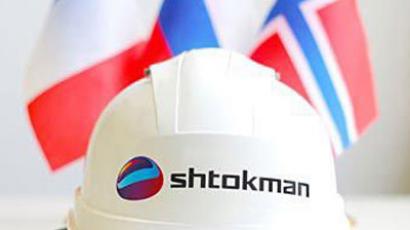Gazprom may shelve Shtokman project as US shale revolution bites

After years of failed attempts to start developing one of the world's largest gas fields, Gazprom might delay the Shtokman project for decades. The shale revolution in the US – the project’s key export market – is undermining its profitability.
Development of the Shtokman gas condensate field in the Barents
sea will most likely be postponed “for future
generations,” Vedomosti daily quotes Andrey Kruglov, Gazprom
deputy chairman. This week Russia’s gas monopoly is due to
discuss the future of the world’s biggest gas deposits, where an
estimated 3.9 trillion cubic metres of gas is held.
Experts say there’s no point in developing the field right now,
as the project is difficult and costly and may fail to find sufficient
demand.
US shale gas has definitely “undermined Shtokman that was
oriented on the US market,” says Tatyana Mitrova, the head of
Russia’s oil and gas development department at the Energy
Research Institute of the Russian Academy of Sciences. “The
deposit is difficult…the problem is that there’s really no other
market left for Shtokman, after it became irrelevant for the
US,” agrees Michael Korchyomkin, a director at East European
Gas Analysis.
Having been developed at the beginning of this century, the production of shale gas in the US has significantly
moved on. In 2010, shale gas represented more than 20% of the
country’s gas production, according to the International Energy
Agency (IEA). The agency also said that by 2035 around 40% of the
world’s gas might be unconventional, and shale gas will by far be
the greatest part of it.
“Gazprom has been trying to start developing the project for
about 10 years. They planned to liquefy part of the extracted gas
and deliver that to the US, and transport another part to Europe
through a pipeline. The trans-Baltic Nord Stream pipeline was
being built for that project,” Kruglov explained. Initially
it was planned to start extracting gas from the Shtokman field
this year. Its income and expense pro forma is estimated at $30
billion.
The South Kirinskoe deposit on the shelf of the Sea of Okhotks
may become the alternative to the Shtokman field, according to
Kruglov. It “has almost the same stock as the Shtokman has and
is located much closer to the Asian Pacific markets.”
The Kirinskoe deposit is 28 km from the shore at a depth of 90
metres. Shtokman is 550 km away from the shore, at a depth of
about 330 metres.
Vedomosti sources told the paper there were plans to develop the
South Kirinskoe deposit earlier than Shtokman. It should become
the base for a Gazprom LNG plant in Vladivostok, that is due to
begin operating in 2018.
However, Grigory Birg, a co-director at Investcafe, remained
skeptical, saying the new project will require huge investment
and may face the same fate as the Shtokman project.














